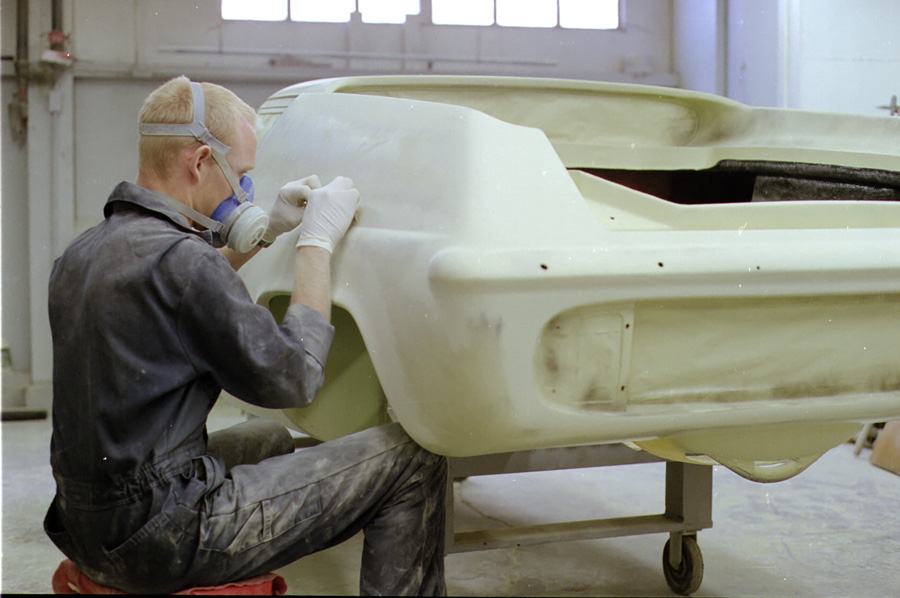Cosmetic Gelcoat Surface Damage 1 Small Scratches 2 Hairline/Spider Cracks 3 Gelcoat Chips. Apply product to repair area. Sand repaired area flush with surrounding surface. 1 Quick Fix Gelcoat Patch 2 Gelcoat Repair Kits 3 Gelcoat/Coloring Agent. Gelcoat Surface Damage 1 Dings 2 Dents 3 Gouges 4 Small Holes.
- Repairing Stress Cracks in a Nonskid Textured Deck I've got a 79 F36 Trojan. The texturing of the deck is dimpled, for lack of a better term. There are recessed spots over the entire nonskid surface. The stress cracks are not much larger then the thickness of a hair. The deck and boat is an off white color.
- One manufacturer use to just sand and polish spider cracks especially on runabouts with metal flake gelcoat. It was a quick way to make it look better for a while anyway, but the cracks always reappeared later. Eventually they went to fixing the cracks the correct way of grinding out the gelcoat and lamination layers that were damaged.
Spider cracks are a form of fiberglass damage that occurs from minor flexing or impacts. They can occur in any form of fiberglass, including cars, boats and swimming pools. Small cracks form in the outer surface of the fiberglass, spreading out from a central point like a spiderweb. These cracks do not affect the structural integrity of the fiberglass, but are an aesthetic issue. Fortunately, spider cracks are not difficult to repair.
Step 1
Clean the area with acetone and a rag to remove any dirt or other impurities.
Step 2
Sand the damaged area with 100-grit sandpaper to roughen the surface. You can sand by hand or with an electric sander.
Step 3
Wash the area with acetone a second time to remove all sanding dust.
Step 4
Mask off the area around the cracks with masking tape and plaster to protect against drips.
Step 5
Pull all of the loose bristles out of a cheap paint brush. Loose bristles may become embedded in the gelcoat.
Step 6
Measure a small amount of gelcoat, which is a thick form of fiberglass resin, into a paper bucket. If the fiberglass will be exposed to water, the gelcoat should be marine grade.
Step 7
Mix catalyst into the gelcoat following the instructions on the container. Precision is important: if you add too much catalyst the gelcoat will cure faster than it can be used, but if you add too little it won't cure at all.

Fiberglass Spider Crack Repair
Step 8
Brush a thin layer of gelcoat onto the sanded area, feathering it out a bit onto the surrounding fiberglass surface.
Step 9
Allow the gelcoat to sit for three hours, then spray it lightly with Polyvinal Alcohol to help it fully cure.
Step 10
Step 11
Step 12

Sand the area with 300-grit sandpaper to begin smoothing it. Re-sand it with 600-grit, then 900-grit and so on. Keep jumping 300 grit at a time until the repeated sanding has produced as smooth of a finish as you require.
Step 13
Prime and paint the fiberglass to match the surrounding surface if needed.
Warnings
- Wear rubber gloves when working with gelcoat.
- Work in a well-ventilated area.
Items you will need
- Acetone
- Rag
- Sandpaper
- Electric sander (optional)
- Masking tape
- Plastic sheeting
- Paintbrush
- Gelcoat
- Paper bucket
- Catalyst
- Mixing stick
- Polyvinyl Alcohol
- Spray gun
- Soapy water and sponge
- Primer and paint (optional)
Boat Gelcoat Spider Crack Repair
- Jupiterimages/Photos.com/Getty Images